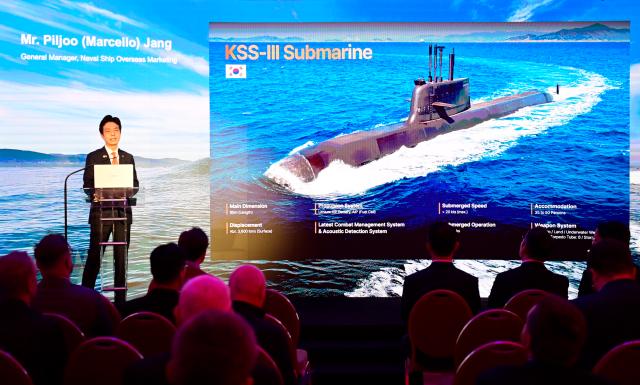
South Korea has a three-stage project called KSS (Jangbogo) to develop a fleet of submarines. Through the first phase, nine 1,200-ton diesel-electric submarines have been built with technical help from Germany’s Howaldtswerke-Deutsche Werft (HDW). The second phase called for the construction of six 1,800-ton vessels. Through the third phase, submarines of 3,000 tons or more are to be built.
In August 2021, Daewoo Shipbuilding & Marine Engineering (DSME) started the construction of the first submarine of the KSS-III Batch-II project, designed to build 3,600-ton class submarines. The second ship entered the construction phase in December 2021. The KSS-III Batch-II submarines will be installed with lithium-ion batteries that are more power-efficient than lead-acid batteries, take up less space, and improve underwater navigation capability and high-speed maneuvering.
South Korea's Defense Acquisition Program Administration (DAPA), the state arms procurement agency, said that Hanwha Ocean was selected as the preferred negotiator for the construction of the third KSS-III Batch-II submarine. DAPA said that the main contract could be signed by the end of 2023.
The KSS-III Batch-II submarine will feature a vertical launch system (VLS) as well as conventional torpedo tubes. The VLS with some ten missile tubes will be used for the launch of Hyunmoo-IV-4, South Korea's homemade submarine-launched ballistic missile (SLBM) with the capability to cold-launch, an ability to eject a missile from the launch tube before ignition using gas pressure.
The test launch of Hyunmoo-IV-4 was successfully carried out in September 2021. In the second test launch that took place in April 2022, the Hyunmoo SLBM flew about 400 kilometers (248 miles) and hit the target. However, the South Korean military did not disclose the maximum distance of the homemade SLBM. Military specialists predict that the range of the missile would be between 500 and 800 kilometers.
Copyright ⓒ Aju Press All rights reserved.




